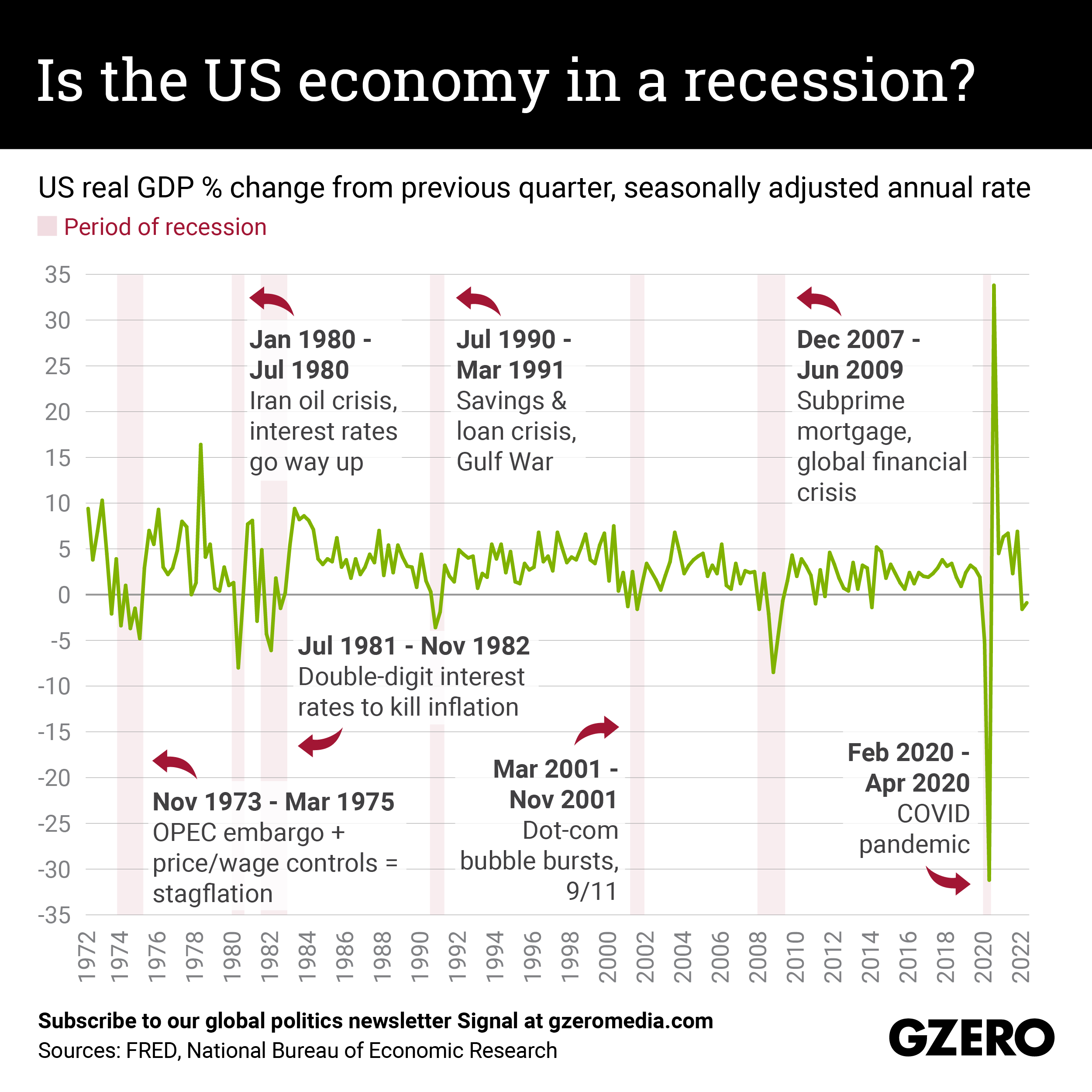July 28, 2022
The short answer is: we don't know (yet).
The US economy declined 0.9% in the second quarter of 2022 compared to the previous three months after shrinking 1.6% in January-March, entering, in theory at least, a "technical recession" — economist-speak for two consecutive quarters of economic contraction. But does that make it official? Nope.
Many economists regard that definition as too narrow because it doesn't take into account other indicators beyond real GDP performance. Indeed, the National Bureau of Economic Research, which calls the shots on US economic cycles, says, rather vaguely, that a recession is "a significant decline in economic activity that is spread across the economy and that lasts more than a few months."
To determine what qualifies as a recession, the NBER considers a bunch of other measures of economic activity. These include real wages (minus inflation), industrial activity, or employment — measured by household surveys, not the number of Americans applying for unemployment benefits, now historically low at 3.6% of the workforce.
Also, the NBER takes time to make the call. So don’t be surprised if Americans feel they're in a recession way before the experts decide to label it as such. It’s also possible to have a recession without two consecutive quarters of economic contraction, like in 2001.
In a nutshell: don't buy all the recession chatter for now, but keep an eye out. Even if the Biden administration won’t say the R-word out loud and the Fed still hopes for a soft landing, most economists agree the US economy is more likely than not headed to a recession in 2023, if not earlier.From Your Site Articles
- Podcast: Making sense of global inflation, looming recession, & economists who disagree - GZERO Media ›
- Power to the workers? What historical trends suggest about newfound employee influence - GZERO Media ›
- Winter is coming. Global recession, too? - GZERO Media ›
- The gap between Americans' perception of the economy and reality - GZERO Media ›
- Global economic outlook: Is a recession already here? - GZERO Media ›
- Ian Explains: Is the US economy good or bad? - GZERO Media ›
- 3 reasons risk of global recession in 2023 has increased - GZERO Media ›
- Trump & Biden spent too much on COVID stimulus, says Austan Goolsbee - GZERO Media ›
More For You
A photograph posted by U.S. President Donald Trump on his Truth Social account shows him sitting next to CIA Director John Ratcliffe as they watch the U.S. military operation in Venezuela from Trump's Mar a Lago resort, in Palm Beach, Florida, U.S., January 3, 2026.
@realDonaldTrump/Handout via REUTERS
Most Popular
- YouTube
In this "ask ian," Ian Bremmer analyzes Trump’s recent meeting with Zelensky and how close (or far) Russia and Ukraine are from a peace deal.
Syrian President Ahmed al-Sharaa attends the military parade of the Syrian army in Umayyad Square in central Damascus to mark the one-year anniversary of the fall of the Assad regime, on Dec. 8, 2025.
Mohammed Al-Rifai/dpa via Reuters Connect
A year ago this month, Syria’s brutal dictatorship collapsed. There are signs of recovery, but sectarian violence threatens to undermine the optimism.
© 2025 GZERO Media. All Rights Reserved | A Eurasia Group media company.
